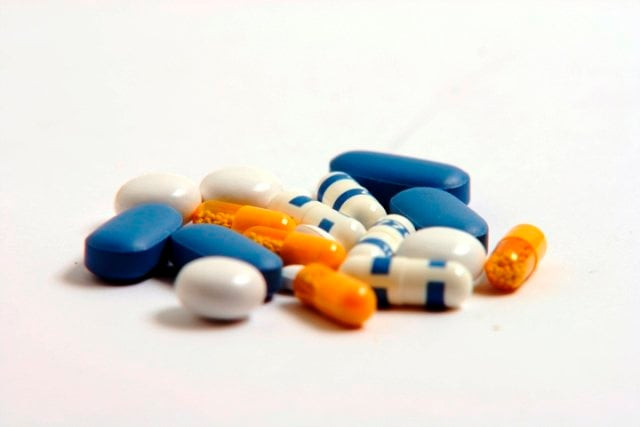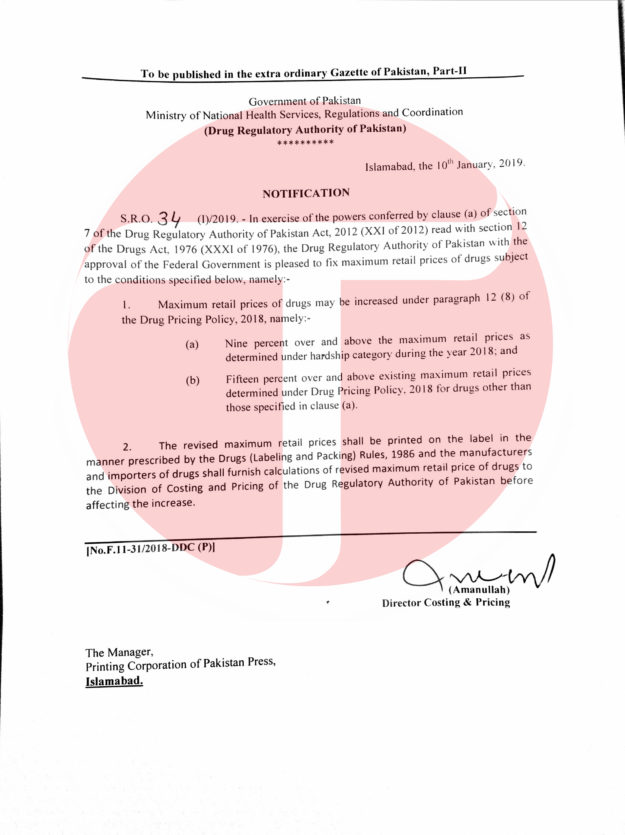DRAP approves 15% increase in medicine prices
With govt approval, it allows 9% increase in life-saving drugs

PHOTO: FILE
In a statement issued on Friday, the authority notified a 9% increase in the retail price of life-saving drugs and 15% in the retail price of other medicines. The increase, in the prices of 898 branded and 123 solid drugs, takes effect from January 1, the notification said.
Sources, however, said that the price hike would impact the rate of some 24,000 medicines, including the life-savings drugs such as medicines for heart ailments, brain diseases, cancer, children's diseases and post-surgical drugs etc.
DRAP fixes prices of 1,084 medicines
The notification said that maximum retail prices of drugs have been increased “under paragraph 12 (8) of the Drug Pricing Policy, 2018”, adding: “Nine per cent over and above the maximum retail prices as determined under hardship category during the year 2018,” read the notification.
Continuing, the notification said: “Fifteen per cent over and above the existing maximum retail prices determined under the Drug Pricing Policy, 2018 for drugs other than those specified in Clause (a).”
DRAP directed the manufacturers that the revised prices must be printed on labels. “The manufacturers and importers of drugs shall furnish calculations of revised maximum retail prices of drugs to the Division of Costing and Pricing of DRAP before implementing the increase,” it added.
DRAP fixes the prices according to their packing size under section 7 of the Drugs Regulatory Authority Act, 2012 with approval from the health ministry. Since December 31, it has raised the prices of about 1,500 medicines.
According to sources, there were several reasons for the price hike, including devaluation of the rupee against the dollar during last one year, which in turn pushed up the cost of raw materials and packaging materials.
Similarly, increased in the gas and electricity tariffs also burdened the pharmaceutical industry, along with additional duties and interest rate hike. Since some multinational companies recently wrapped up their businesses, there has been a desperate shortage of life-saving drugs.
According to a DRAP spokesperson, the authority strives for the provision of quality medicines at appropriate prices. The spokesperson added that despite the increase, prices would remain lower than the rates in the international or regional markets.
“The current increase in MRP [maximum retail price] of prices is due to the 30% decrease in the value of Pak Rupee against US dollar last year. Resultantly, the prices of raw materials and cost prices of materials used in the packaging of medicines also increased,” the spokesperson said in a statement.
“DRAP tried to maintain status quo, as an increase in the prices of medicines was resisted. But keeping in view the unavailability of medicine in market and reasons that were beyond the control of either the regulator or manufacturers such as the increase [of the] US dollar and increased prices of raw materials, DRAP recommended nominal increases in MRP,” the spokesperson added.
“Thus, recommendations [of price hike] were necessary to save the industry. DRAP, after consultation with all stakeholders, recommended 9% and 15% increase in MRPs of medicines. It shall be noted that DRAP is continuously ensuring the availability of quality, safe and effective medicine in the country.”


















COMMENTS
Comments are moderated and generally will be posted if they are on-topic and not abusive.
For more information, please see our Comments FAQ